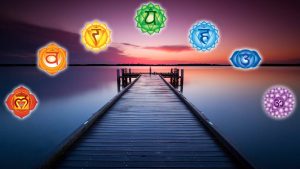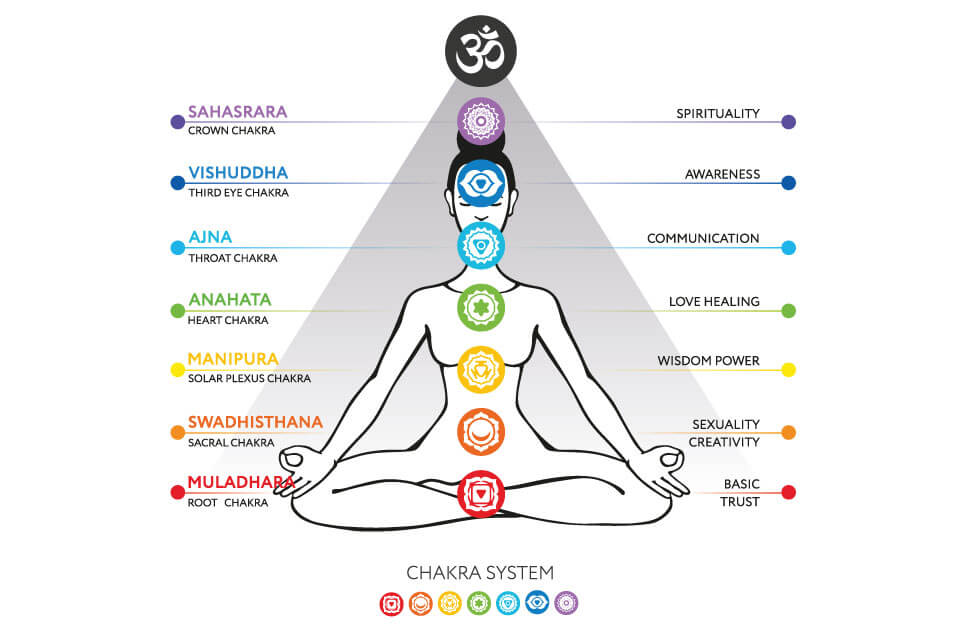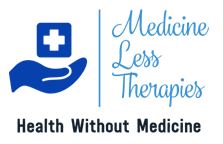
Reiki is a form of alternative therapy commonly referred to as energy healing.
Energy healing has been used for centuries in various forms. Advocates say it works with the energy fields around the body.
Some controversy surrounds Reiki, because it is hard to prove its effectiveness through scientific means.
However, many people who receive Reiki say it works, and its popularity is increasing.
-
Reiki is a form of energy therapy.
-
Despite skepticism in some circles, it is growing in popularity.
-
It involves the transfer of energy by laying on hands.
-
Reiki’s advocates say it can treat many conditions and emotional states.
-
Small studies show that Reiki can slightly reduce pain, but no studies have shown that it is effective in treating any diseases.
-
Some hospitals in America and Europe offer Reiki, but insurance rarely covers it.
What is Reiki?

In Reiki, the practitioner transfers energy by placing their hands over or on the patient.
The word “Reiki” means mysterious atmosphere, miraculous sign.
” It comes from the Japanese words “rei” (universal) and “ki” (life energy). Reiki is a type of energy healing.”
Energy healing targets the energy fields around the body.
According to practitioners, energy can stagnate in the body where there has been physical injury or possibly emotional pain. In time, these energy blocks can cause illness.
Energy medicine aims to help the flow of energy and remove blocks in a similar way to acupuncture or acupressure. Improving the flow of energy around the body, say practitioners, can enable relaxation, reduce pain, speed healing, and reduce other symptoms of illness.

Reiki has been around for thousands of years. Its current form was first developed in 1922 by a Japanese Buddhist called Mikao Usui, who reportedly taught 2,000 people the Reiki method during his lifetime.
The practice spread to the U.S. through Hawaii in the 1940s, and then to Europe in the 1980s.
It is commonly referred to as palm healing or hands-on healing.
What happens in a Reiki session?
- Reiki is best held in a peaceful setting, but it can be carried out anywhere. The patient will sit in a comfortable chair or lie on a table, fully clothed. There may or may not be music, depending on the patient’s preference.
- The practitioner places their hands lightly on or over specific areas of the head, limbs, and torso using different hand shapes, for between 2 and 5 minutes. The hands can be placed over 20 different areas of the body.
- If there is a particular injury, such as a burn, the hands may be held just above the wound.
- While the practitioner holds their hands lightly on or over the body, the transfer of energy takes place. During this time, the practitioner’s hands may be warm and tingling. Each hand position is held until the practitioner senses that the energy has stopped flowing.
- When the practitioner feels that the heat, or energy, in their hands has abated, they will remove their hands and may place them over a different area of the body.
Some Reiki techniques
The techniques involved have names such as:
- centering
- clearing
- beaming
- extracting harmful energies
- infusing
- smoothing and raking the aura.

Some Reiki practitioners will use crystals and chakra healing wands, because they find these can enable healing or protect a home from negative energy.
However, Annie Harrington, Chair of the Reiki Federation of the United Kingdom (U.K.), told Medical News Today:
“Reiki relies on no other instruments beyond the practitioner. We do not use crystals, powders or wands as a general rule. However, one of the benefits of Reiki healing is distance healing (where Reiki is sent over several miles) then, many practitioners will use crystals to assist with the energy vibrations.”
Sessions can last between 15 and 90 minutes. The number of sessions will vary, depending on what a client wishes to accomplish. Some clients prefer to have one session while others have a series of sessions to work on a particular issue.
Health benefits
- According to practitioners, the healing effects are mediated by channeling the universal energy known as qi, pronounced “chi.” In India, this is known as “prana.” This is the same energy involved in tai chi exercise. It is the life force energy that some believe surrounds all of us.
- This energy is said to permeate the body. Reiki experts point out that, while this energy is not measurable by modern scientific techniques, it can be felt by many who tune in to it.
- Reiki is alleged to aid relaxation, assist in the body’s natural healing processes, and develop emotional, mental, and spiritual well-being.
- It is also said to induce deep relaxation, help people cope with difficulties, relieve emotional stress, and improve overall wellbeing.
- People who receive Reiki describe it as “intensely relaxing.”

Conditions that Reiki has been used to help treat include:
- cancer
- heart disease
- anxiety
- depression
- chronic pain
- infertility
- neurodegenerative disorders
- autism
- Crohn’s disease
- fatigue syndromes
According to the University of Minnesota, patients who have undergone a Reiki session may say:
-
“I feel very refreshed and seem to be thinking more clearly.”
-
“I think I fell asleep.”
-
“I can’t believe how hot your hands got!”
-
“I feel more relaxed than even after a massage.”
-
“My headache is gone.”
Cancer patients who have Reiki say they feel better after. This may be because it helps them relax. Another reason, according to Cancer Research U.K. could be that the therapist spends time with them and touches them. This has a soothing effect on patients who may be overwhelmed by invasive therapy, fear, and stress.
Individuals report different experiences. Some say that the practitioner’s hands become hot, others report cooling hands and some people feel pulsating waves. The most common reports are of a release of stress and deep relaxation.
Becoming a Reiki practitioner:
No prior training, education, or experience is needed to enter the Reiki training, or “attunement process.” In this process, said to be a “powerful spiritual experience,” the master is said to transfer the attunement energy and healing techniques into the student.

Reiki training varies, but most students learn about:
- the energies around the body
- how to work with healing energy
- the ethics of working with clients
Preparation for attunement includes fasting for 2 to 3 days, meditation, focusing on nature, and releasing negative emotions.
There are three levels of mastery. Those who reach “Master” level can teach others and are reportedly able to heal from a distance, like a form of prayer.
Reiki’s healing power: What is the evidence?
- While Reiki grows in popularity, questions remains.
- Reiki claims to enable relaxation, reduce pain, speed healing, and improve some symptoms, but few research findings support any specific health benefits. It has been criticized for claiming to heal diseases without scientific evidence. Some have described its claims as fraudulent.
- Critics say that it flies in the face of our current understanding of the laws of nature. Advocates respond that the benefits of wellbeing and reduced stress are real but hard to measure with a scientific study.
- Scientists note that high-quality research into its effectiveness is lacking. No study has yet shown that it is any more effective than a placebo.
- A literature review published in 2008 concluded that there was not enough evidence to support Reiki as an effective treatment for any condition, and that its value remained unproven.
- In 2015, a review of studies on Reiki and the treatment of anxiety and depression was published by Cochrane. The investigators concluded that there was “insufficient evidence to say whether or not Reiki is useful for people over 16 years of age with anxiety or depression or both.” Of the few studies that had been done, most were of a low quality, with small sample sizes, no peer review, or no control group.
- Meanwhile, research published in BMC Nephrology has suggested that allowing dialysis patients, for example, to benefit from the “healing touch” may be worthwhile, especially if it offered for free by volunteers. Pain reduction may be only slight, but it is non-traumatic, does no harm, and allows patients to feel they are “doing something” themselves to ease their pain.
- More recently, Annie Harrington told MNT that the U.K. Reiki Federation currently has a “large document cataloging many research trials.” Maybe these findings, which are being studied by the Federation and the U.K.’s Complementary and Natural Healthcare Council (CNHC), will help bring Reiki further into the mainstream.
Regulatory issues: Time for a change?
- Regulatory authorities sometimes ask Reiki websites to change their information to conform with legal standards. Sites selling Reiki products may carry a legal disclaimer, stating that the products are not a medical device, and not intended for use in diagnosing, healing, or preventing disease.
- In the U.K., the Advertising Standards Agency (ASA) has rejected claims that Reiki can heal a range of diseases on a number of occasions.
- Judy Kosovich, in a study published by Physics Procedia, calls for a “fresh look” at the regulation of energy medicine. While accepting that regulatory bodies exist to protect the public, she argues that there is still much about how the body works that is not understood or described by science.
Is Reiki harmful?
- The U.S. National Center for Complementary and Integrative Health (NCCIH) state that Reiki “has not been clearly shown to be useful for any health-related purpose.” However, they add that it does not appear to have any harmful effects.
- The main concern appears to be that people with serious health issues may opt for Reiki and other complementary therapies instead of rigorously tested modern medicine. However, using it alongside other treatments is unlikely to be hazardous.
- Indeed, touch alone, whether with or without “universal energy,” appears to have a range of benefits, from building trust to enhancing overall wellbeing.
- Kosovich points out that expensive conventional treatments that are currently available often have serious adverse effects, and may or may not work. Many people, therefore, would like the freedom to choose an alternative.
Who can learn Reiki :
- Reiki is a simple, natural and safe method of spiritual healing and self-improvement that everyone can use. It has been effective in helping virtually every known illness and malady and always creates a beneficial effect.
- It also works in conjunction with all other medical or therapeutic techniques to relieve side effects and promote recovery.
- An amazingly simple technique to learn, the ability to use Reiki is not taught in the usual sense, but is transferred to the student during a Reiki class.
- This ability is passed on during an “attunement” given by a Reiki master and allows the student to tap into an unlimited supply of “life force energy” to improve one’s health and enhance the quality of life. Its use is not dependent on one’s intellectual capacity or spiritual development and therefore is available to everyone.
- It has been successfully taught to thousands of people of all ages and backgrounds. Reiki classes are taught all over the country and in many parts of the world.
Disadvantages of Reiki:
A question may come to your mind, like “is there any Disadvantages of Reiki? Although it would be wrong to say that the below-mentioned points are disadvantages of Reiki, but they surely create a doubt in the mind of the Reiki healers:
- No Formal regulatory body: Practitioners of this therapy named Reiki actually receives no recognized certification officially or licensing. Based on the principles of this art, one needs to learn it from a master and accept direct transmission Nil scientific support: Reiki cannot offer any assurance of proving its effectiveness.
- These are no scientific proof for its effect on human life. It’s the faith between the practitioner and recipient which can only speak about its effectiveness.
Reiki healers are not recognized by scientists. Since so far Reiki proved to be beneficial for the human life, we recommend you to visit an expert of Reiki to know what benefit you can expect from it in your life.
